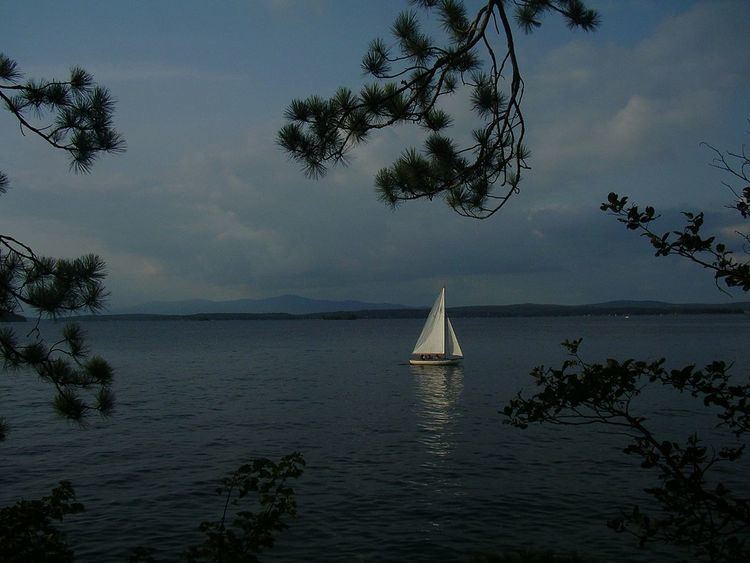Phone +1 603-875-3060 | ||
 | ||
Address 43 Camp Kabeyun Road, Alton Bay, NH 03810, USA Similar Camp Winaukee, Camp Deer Run, Camp Belknap, Camp Brookwo, Sandy Island Family C Profiles | ||
Camp kabeyun
Camp Kabeyun is a summer camp for boys established in 1924 on Lake Winnipesaukee in Alton, New Hampshire, emphasizing individual, non-competitive outdoor activities.
Contents
Japoocha at camp kabeyun
History
The camp occupies an 89-acre (36 ha) site at the mouth of Alton Bay, with almost a mile of lakefront and two sandy coves; it is the largest undeveloped stretch of shoreline on the lake. The property includes an old Abenaki camping ground at Fort Point. Before its present use, the land was farmed for several generations. A small graveyard at the rear of the site, enclosed by stone walls, serves as burial place for the former owners' families, with headstones dating back to the 1840s.
Kabeyun was founded in 1924 by John Porter, a teacher at the Browne & Nichols School in Cambridge, Massachusetts. After renting for five summers, Porter purchased the property in 1929. The camp's name comes from a character in The Song of Hiawatha. Kabeyun has no religious affiliation.
Camp Kehonka in Wolfeboro, New Hampshire, which closed in 1985, long served as an informal sister camp. The New England Literature Program is based at Kabeyun in the spring. Following the regular season, Kabeyun holds a "family camp" through Labor Day.
John Porter remained active at Kabeyun as Director Emeritus until his death in 1978. He was succeeded as director by William Old, then a teacher at the Potomac School and later Headmaster of The Hill School and Powhatan School. Nick Latham, a former camper and sailing counselor, left a career as an engineer to serve as director from 1973 to 1995. More than 250 former campers and staff attended a memorial service for Latham held at camp in the summer of 2007, following his death from Parkinson's disease. Chuck Mills, a former high school English teacher, served as director from 1996 to 2010. The present director is Ken Robbins, an outdoor educator.
Since 1973, Kabeyun has been operated by the John and Anna Newton Porter Foundation, which also owns the camp property. If camp should fail to open for three summers, New Hampshire Audubon will hold the land in perpetuity as the John and Anna Porter Wildlife Sanctuary.
Program
Boys at Kabeyun choose their own activities without restriction. They sign up for trips each Sunday, and for in-camp activities daily at breakfast and at lunch. Kabeyun also emphasizes the importance of unstructured "down time" before lunch and dinner, and in the evenings.
Kabeyun serves approximately 220 campers, aged 7 to 15, each summer. Maximum enrollment is 120 campers. Most boys attend one of two four-week sessions, while some choose the longer seven- or eight-week sessions. Campers live in screened cabins, with restrooms and showers in separate facilities nearby. The camp has a counselor staff of about forty, more than half of whom were once campers themselves. Kabeyun awards more than $50,000 in need-based tuition assistance each summer.
Kabeyun offers a variety of hiking, canoeing, kayaking, and rock-climbing trips, ordinarily ranging in length from one to five days, with two staff leading six campers on each trip. Most trips explore destinations within New Hampshire, while others travel as far as the Adirondacks or the Allagash River. The Kabeyun Mountain Club, which was founded in 1953 by Ivan Hall – later a noted scholar of Japan – climbs Mount Carrigain each summer.
The sailing fleet includes one Hobie Cat, two Flying Juniors, a 420 Class FJ, two Laser Picos, a Cape Cod catboat, several Sunfish, and five fiberglass Town-class sloops. The Towns regularly embark on overnight sailing trips across the lake. Kabeyun also has a well-regarded dramatics program; until the 1980s, the Kabeyun Amateur Operatic Society (KAOS) regularly performed Gilbert and Sullivan light opera.
Other in-camp activities include swimming (the only required activity for most boys), waterskiing, fishing, windsurfing, nature, tennis, badminton, croquet, athletics, archery, ropes course, photography, woodshop, leathercraft, pottery, and arts and crafts. At the end of each summer session, campers may participate in a one-mile swim in Lake Winnipesaukee. The camp newspaper, The Log of the West Wind, has been published weekly in season since 1928.
Philosophy
"We believe that one of the greatest gifts we have to give our campers is an arena in which they can dream and question and take risks in relative safety. One of our prime goals is to provide such a setting and to help each camper find success. We want everyone to find the knowledge that comes from doing, and to experience the thrill and dignity of accomplishment, whether in an activity mastered or a friendship gained.
"We also offer a special experience in good citizenship. We want Kabeyun to be a place where every individual counts. Through living together in our small community and following Kabeyun traditions of long standing, and the example and teachings of both our staff and returning campers, boys learn to be respectful of one another, and tolerant and understanding of the rights of others.
"These, we believe, are the greatest contributions Kabeyun can make."
-W. Nichols Latham, 1936-2006
